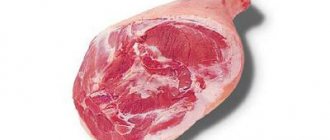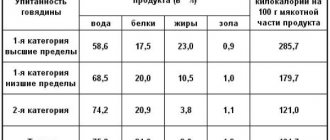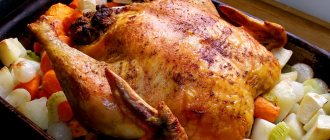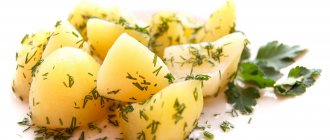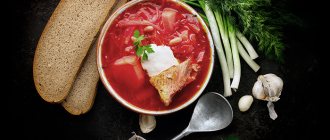Beef is one of the most common types of meat. In cooking, different parts of the carcasses of bulls, cows and calves are equally valued (the flat part of the brisket, the upper part of the shoulder, the middle part of the rump, the rib, neck, sirloin, shoulder, hip or shoulder parts). To prepare main courses, soups, and minced meat, tenderloin, shoulder, flank, front and back shanks are used.
Sausage and cutlet meat usually consists of two types: beef and pork. For steaks, the marbled variety with small layers of fat is preferred, which makes the meat juicy and tender (for example, for T-bone steak), or false fillet. It is cooked steamed, grilled, in the oven, baked in foil and in whole pieces. But what are the calorie content, composition, benefits and harms of this product?
Raw beef calories
What is the energy value of raw beef? Per 100g of lean pulp there are 187 kcal. The nutritional value of the product is represented by the following figures:
- proteins - 18.9 g;
- fats - 12.4 g;
- carbohydrates - 0 gr.
If for some categories (varietal, sirloin and rump) these indicators are the norm, then in the fatty variety, which is usually removed from the lower outer part of the thigh, the calorie content can reach up to 230 kcal. There are also a lot of layers in the flank. The prime cut from the back, the point of the shoulder and the inside of the shoulder are the leanest parts.
If earlier cutlets were prepared from homemade minced meat, now they usually take purchased ones (for example, from Miratorg). Its calorie content should be looked at on the packaging.
Calorie content of boiled beef
When planning the menu for the day, many include boiled meat rather than fried thick sirloin. But how many calories are in boiled beef?
Photo source: shutterstock.com
100 grams contain 232.4 kcalories, and BZHU has the following indicators:
- proteins - 24.3 g;
- fats - 15 g;
- carbohydrates - 0.22 gr.
But the figures given are valid for lean meat. If it has layers of fat, which sometimes occurs, or is smoked and boiled, then the energy and nutritional value will be higher.
Fried pork: calorie content and harm of the product
Fried meat is known to be harmful to the body, since pork contains a lot of cholesterol. A lot of growth hormones also have an unfavorable effect on the body’s condition. The calorie content of fried pork increases as a result of adding large amounts of fat for frying. Therefore, it is important to know how to properly prepare meat dishes. For frying, you need to use a non-stick pan, as a result, less oil will be used for cooking, and your body will not suffer from the extra calories of pork.
Calorie content of beef stew
An even lower calorie dish is beef stew, which goes well with steamed vegetables.
Photo source: shutterstock.com
How many calories are in 1 serving of this dish? Per hundred grams comes out to 220 kcal. In this case, the BZHU is represented by the following ratio:
- proteins - 18.3 g;
- fats - 13 g;
- carbohydrates - 0.07 g.
This stewed variety is ideal for a diet.
Meat for weight loss
Often, when losing weight, the first thing they try to do is exclude meat from the menu: its calorie content is high compared to fruits and vegetables, and it contains fat. However, this is a wrong decision. During the cooking process, in most cases, meat becomes less nutritious as fat is rendered.
The product contains a number of nonessential and essential amino acids in the absence of carbohydrates. Moderate consumption of meat does not cause the formation of fat deposits, since most of the compounds are consumed immediately, and proteins promote weight loss.
With an integrated approach, meat dishes help achieve the desired result when playing sports. They contain enough amino acids to form muscle mass. Fibers require a lot of energy to maintain a satisfactory condition, so the total expenditure of calories increases, including during rest. Digestion of animal proteins also requires a lot of effort on the part of the gastrointestinal tract, so part of the nutritional value goes to processing the product.
The calorie content of boiled beef is 175 units per 100 g. You can achieve lower values by steaming the product and purchasing the leanest parts. Depending on the side dish, not all fats may be absorbed. Some of the energy will be spent on digestion. All factors together help achieve weight loss.
Calorie content of lean beef
Parts of carcasses that are sold in pieces without layers of fat are considered lean. At its core, it is a fillet that is recommended to be cooked without the use of oil. The product is considered dietary and even after cooking is able to retain most of its beneficial properties.
Photo source: shutterstock.com
So how many calories are in lean beef? 100 grams of this product contain only 158 kilocalories, and BJU is considered ideal for weight loss. This is 7.1 g of fat and 22.2 g of protein. There are no carbohydrates here at all.
How many calories are in broth and compote?
When cooking, part of the calories is transferred from the food to the broth: from fish - 15%, from meat - 20%, fruit - 30%, dumplings, manti and khinkali - 20%. These numbers may fluctuate: it all depends on the cooking time of the products.
Let's calculate the calorie content of salmon fish broth. Take a salmon steak weighing 300 g and 1 liter of water. Calorie content of salmon in 100 g = 142 kcal, in 300 g of this fish = 426 kcal (142 × 3).
426 kcal – 15% = 63.9 kcal (rounded to 64 kcal).
1 liter of salmon broth contains 64 kcal . 100 ml of broth contains only 6.4 kcal!
Composition and nutritional value of beef
What is the main advantage and biological value of this type of meat? This variety has a balanced chemical composition. Thanks to it, beef meat products provide quick satiety. What substances are included in the chemical composition of this type of meat?
Photo source: shutterstock.com
It is represented by the following substances:
- iron;
- zinc;
- B vitamins;
- calcium;
- potassium;
- vitamin E;
- magnesium;
- fluorine;
- manganese;
- molybdenum;
- phosphorus.
Also, the rich mineral and vitamin complex contains copper, vitamin PP and other substances beneficial to the body of an adult and a child. At the same time, beef meat does not provoke allergies. That is why it is often introduced into baby food.
Daily intake of beef
What piece can you eat a day so that it is healthy and does not harm the body? The daily intake is 150 grams for an adult.
Photo source: shutterstock.com
For children, this figure is less and is only 80 grams. However, doctors strictly do not recommend including beef in your daily diet. But you should not use it more than 3-4 times a week.
The benefits and harms of beef
What are the beneficial properties of the product? How is it good for the body of a man, woman or child? The benefit of beef lies in its high protein content. Due to this, it is able to satiate a person as quickly as possible without harming the figure. At the same time, the meat contains very little fat, which reduces the load on the kidneys, heart, liver and blood vessels.
Photo source: shutterstock.com
Beef can be safely included in the diet during weight loss and for pregnant women. The amino acid composition of the product is absolutely safe. There are other positive properties of tenderloin, which provide:
- improvement of metabolism;
- removing harmful cholesterol from the blood;
- strengthening the walls of blood vessels;
- increase in muscle mass.
Another product allows you to normalize the functioning of the gastrointestinal tract, effectively restores blood flow, and provides high-quality prevention of anemia. Beef stimulates active brain activity, strengthens hair, bones, nails and teeth, and normalizes the functioning of the central nervous system.
It is recommended to include beef in the menu of people who actively train or whose work involves heavy daily loads. It will prevent the body from becoming exhausted. It is also worth introducing it during the recovery process after injuries, operations, loss of large amounts of blood and serious illnesses.
Photo source: shutterstock.com
But beef is not always healthy for everyone. For some, it can only bring harm. It is important to consume meat in moderation, otherwise excessive intake of protein into the body can impair the optimal functioning of the stomach, liver and kidneys. You may also encounter other problems:
- formation of stones;
- decreased immunity;
- increased risk of esophageal cancer;
- failure in the functioning of the myocardium;
- inflammation of the pancreas, kidneys and other organs.
Also, excessive consumption of meat can provoke the formation of cholesterol plaques, which lead to blockage of blood vessels.
ABC RECOMMENDS
Fried potatoes: calorie content, benefits, nutritional value
Composition and beneficial properties of beef
Beef contains the following substances:
- Vitamin B3. Nicotinic acid dilates small vessels and capillaries, which helps improve cerebral circulation. The substance helps eliminate cholesterol plaques and reduces the load on the arteries. Eating beef helps normalize hormonal levels.
- Vitamin B4. Choline takes part in the functioning of the nervous system. With a deficiency, the likelihood of disturbances in its functioning increases. The vitamin helps cleanse the blood of excess fatty acids and cholesterol. Choline helps digest food and is involved in carbohydrate metabolism.
- Vitamin B5. Pantothenic acid promotes the synthesis of hormones by the adrenal glands. Eating beef helps prevent the development of colitis, arthritis, allergies and heart pathologies. The vitamin improves the functioning of the immune system and the formation of antibodies. The substance reduces cravings for alcoholic beverages and helps reduce the severity of adverse reactions after drinking them.
- Vitamin B6. Pyridoxine takes part in metabolism. It promotes proper oxidation of fats and proteins. The vitamin prevents the development of central nervous system diseases and skin pathologies. Pyridoxine acts as a natural diuretic. When there is a deficiency, a person’s limbs go numb and suffer from cramps and spasms.
- Vitamin B9. Folic acid is required for the creation and renewal of cells, therefore it prevents the development of autoimmune diseases and the occurrence of malignant tumors. The substance regulates the activity of the nervous system. This allows you to correctly alternate reactions of excitation and inhibition.
- Vitamin B12. Cobalamin is necessary to normalize hematopoietic function. It is involved in the process of formation of red blood cells.
- Vitamin K. The substance normalizes blood clotting and prevents blood vessels from calcification. The risk of developing liver cancer is reduced.
- Potassium. Stabilizes the heartbeat and is responsible for normalizing water balance.
- Calcium. Ensures normal muscle contraction and transmission of nerve impulses. Participates in the regulation of vascular permeability.
- Magnesium. Responsible for the transmission of nerve impulses and the processes of muscle contraction and relaxation. Maintains the condition of bones and teeth, protects them from damage.
- Sodium. Normalizes water-salt balance. Sodium promotes food digestion because it activates enzymes in saliva and pancreatic secretions.
- Phosphorus. Participates in fat metabolism and the synthesis of essential amino acids. Without phosphorus, normal muscle and brain activity is impossible.
- Iron. Takes part in the formation of hemoglobin. Improves the functioning of the immune system and helps provide the body with oxygen.
- Manganese. Improves the absorption of ascorbic acid and promotes normal glucose perception. Regulates its level in the blood. With a deficiency, food digestion worsens, the functioning of the nervous system and brain is disrupted.
- Copper. Required for the conversion of iron into hemoglobin and is indirectly involved in saturating the body with oxygen. Copper promotes the synthesis of the happiness hormone.
- Zinc. Necessary for the formation of bone tissue and hair. Allows for more efficient use of vitamin A.
- Selenium. Prevents the occurrence of tumors and improves the functioning of the immune system.
Beef calorie table
To make it easier to calculate the energy value of your menu for the day, use the ready-made data presented in the table:
| Name of the dish | Calorie content per 100 g (kcal) |
| Beef broth | 4 |
| Entrecote | 220 |
| Shchi with beef | 42 |
| Beef Stroganoff | 193 |
| Beef pilaf | 219 |
| With onions and other vegetables | 116 |
| Smoked-boiled | 113 |
| Boiled in water without salt | 217 |
| Dried | 235 |
| With gravy | 117 |
| Dry-cured | 272 |
| Baked in the oven | 168 |
This video recipe will help you prepare a dietary beef dish:

